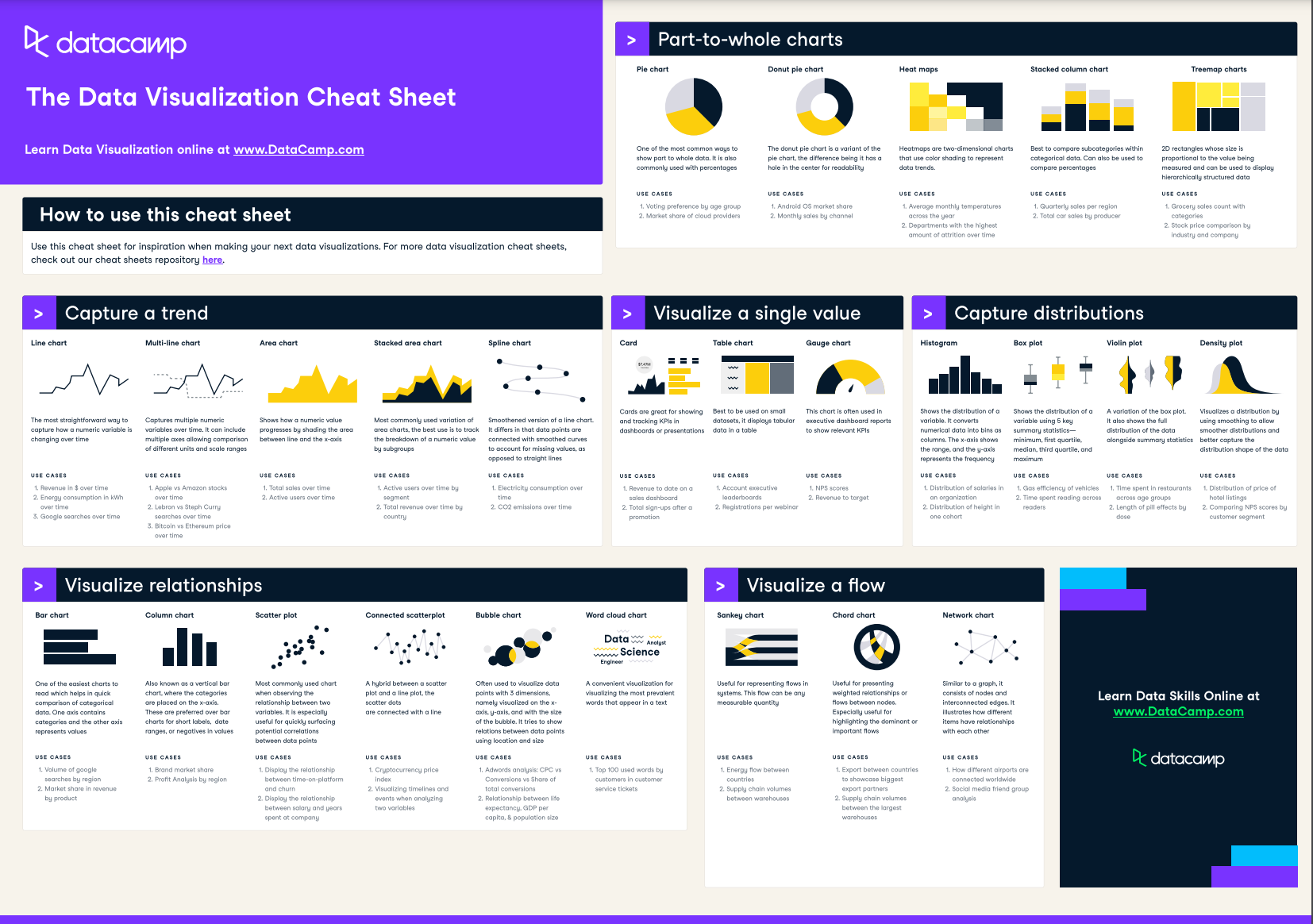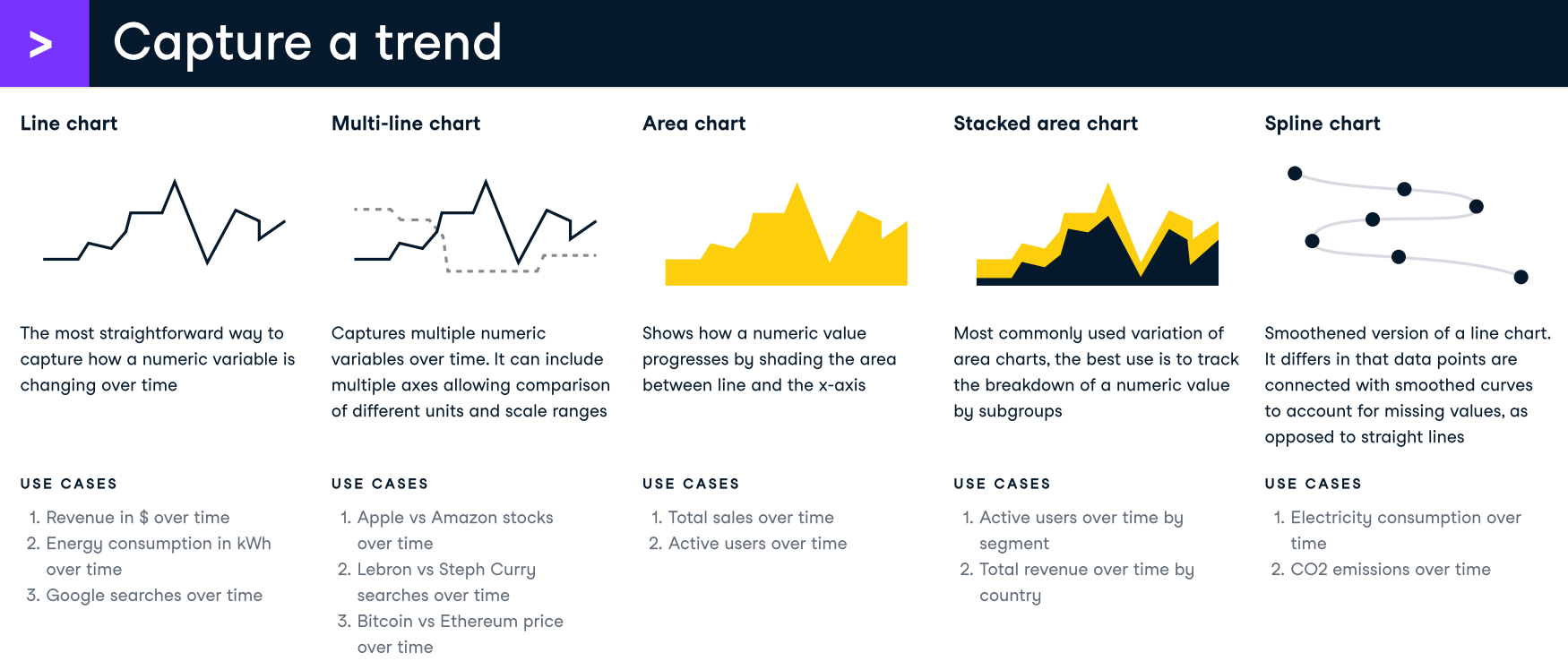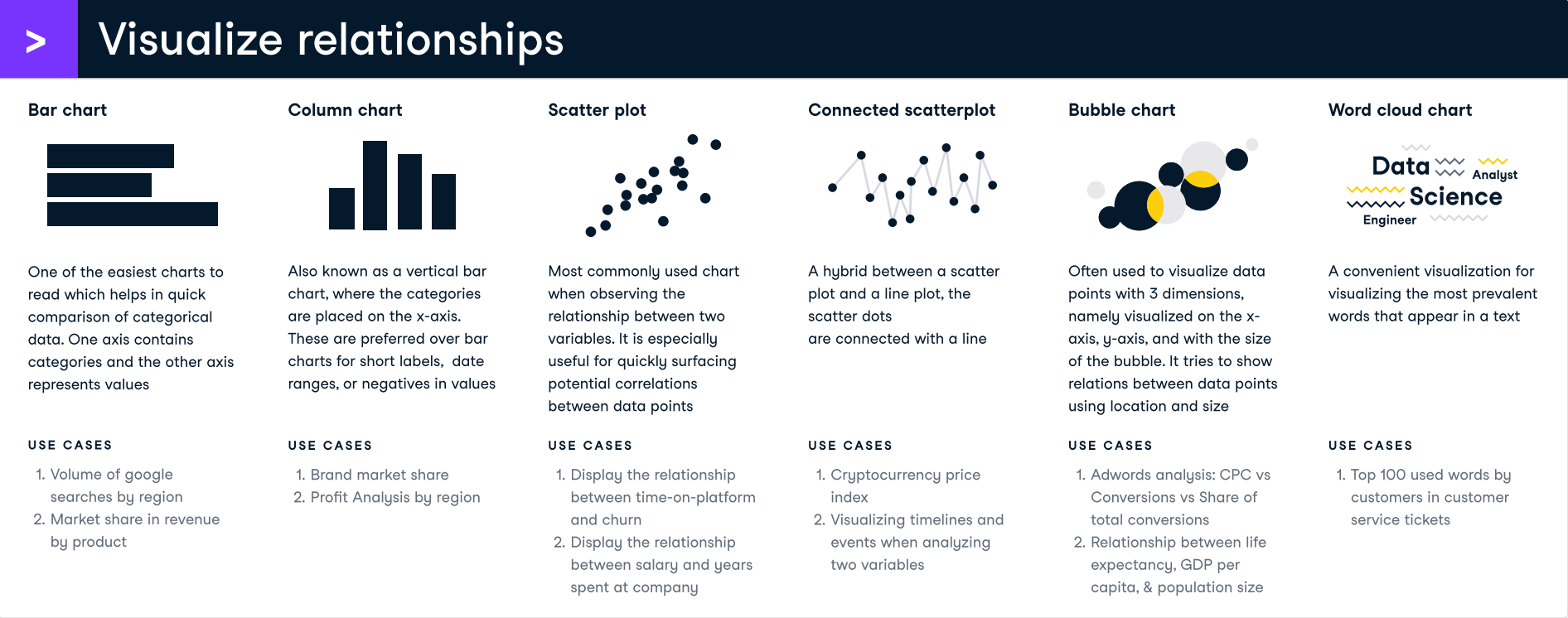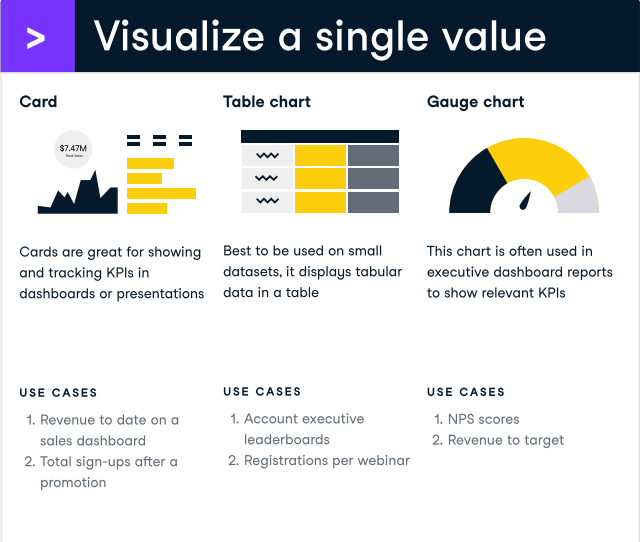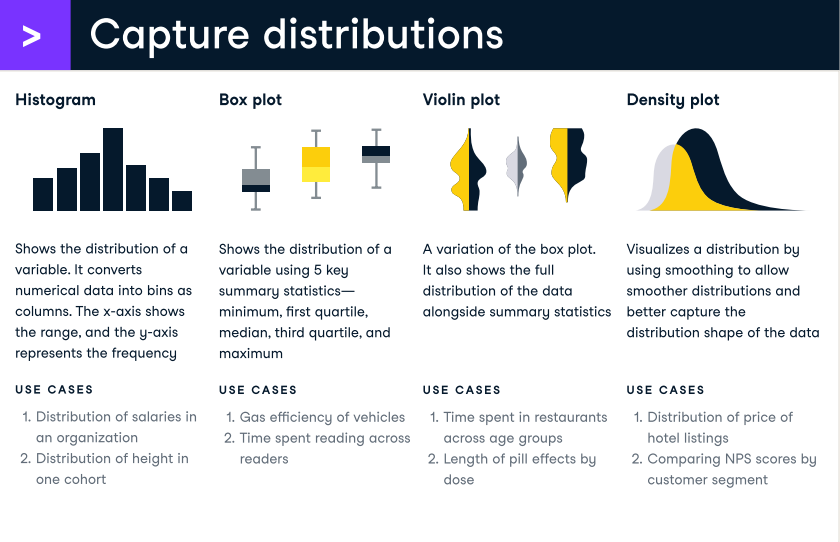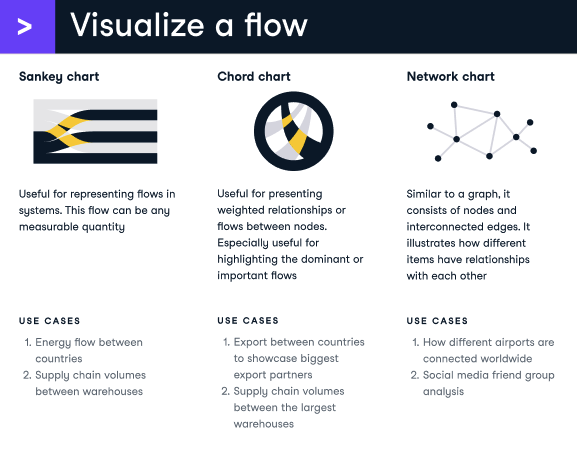Data Visualization Cheat Sheet
In this data visualization cheat sheet, you'll learn about the most common data visualizations to employ, when to use them, and their most common use-cases.
Apr 2022 · 5 min read
RelatedSee MoreSee More
blog
11 Data Visualization Techniques for Every Use-Case with Examples
Discover the most popular analyses, techniques, and tools to master the art of data visualization.
Javier Canales Luna
16 min
blog
[Infographic] Dashboard Design Checklist
Dashboards are one of the most useful tools when communicating data stories. Here is a handy checklist to keep in mind when designing your next dashboard.
DataCamp Team
cheat sheet
Descriptive Statistics Cheat Sheet
In this descriptive statistics cheat sheet, you'll learn about the most common statistical techniques for descriptive analytics.
Richie Cotton
5 min
cheat sheet
Data Storytelling & Communication Cheat Sheet
In this data storytelling and communication cheat sheet, you'll learn about best practices for crafting data stories.
Richie Cotton
6 min
cheat sheet
Tableau Cheat Sheet
In this Tableau Cheat Sheet, you'll get the download on creating your first visualization, top visualizations in Tableau, creating dashboards, stories, and more.
Richie Cotton
8 min
cheat sheet
Power BI Cheat Sheet
In this Power BI Cheat Sheet, you'll get the download on creating your first visualization, top visualizations in Power BI, using DAX, and more.
Richie Cotton
8 min
